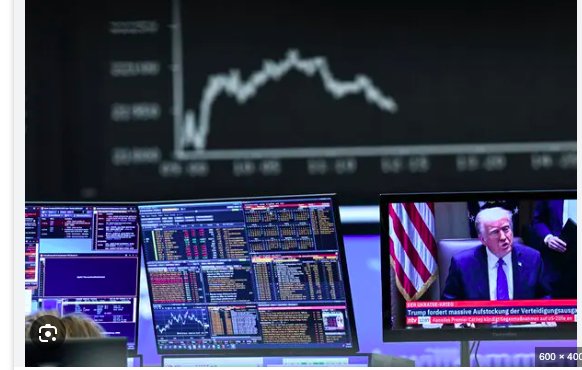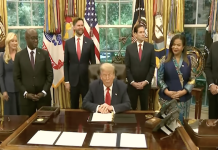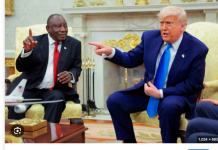
/
RSS Feed
Asian and European markets took a hit on Wednesday following the latest round of sweeping U.S. tariff hikes announced by President Donald Trump, deepening investor concerns over the intensifying trade war.
Trump’s new wave of tariffs—topping out at a staggering 104% on Chinese imports—kicked in this week, and he signaled more to come, including duties on pharmaceuticals to promote domestic production. His remarks fueled further uncertainty over the direction of U.S. trade policy.
Despite the chaos, Chinese stock markets staged a surprising recovery. Both the Shanghai Composite and Hong Kong’s Hang Seng Index ended the day in positive territory, gaining 1.3% and 0.7%, respectively. Analysts attribute the rebound to aggressive share buybacks by major state-owned firms and expectations of increased government stimulus to soften the blow of the tariffs—especially on small businesses and job-creating manufacturers.
Asia’s Mixed Bag: Sharp Losses in Taiwan, South Korea
Not all of Asia fared well. Taiwan’s Taiex Index suffered the steepest fall, plunging 5.8% amid selloffs in major tech stocks. South Korea’s Kospi dropped 1.7%, prompting the government to announce emergency support for the country’s struggling automakers.
Meanwhile, China released a policy paper reiterating its right to defend domestic industries with potential countermeasures, though it reaffirmed its preference for resolving disputes through dialogue. The document also pushed back on claims of trade imbalance, pointing out that U.S. companies benefit heavily from operations in China.
Europe Follows with Steep Declines
European markets opened deep in the red. Germany’s DAX fell 2.4%, while France’s CAC 40 and the UK’s FTSE 100 shed 2.4% and 2.2%, respectively. Investors remain wary of prolonged economic fallout if the tariffs remain in place, with fears of a global recession gaining traction.
“Markets are extremely jittery right now,” said one analyst. “The longer these tariffs last, the more damage they do—both to global trade and to consumer confidence.”
Trade War’s Bigger Picture
Trump’s protectionist push aims to reshape global trade by narrowing the U.S. trade deficit, but critics warn it could unravel decades of globalization. While tariffs may bring some manufacturing jobs back to the U.S., they also risk raising consumer prices and straining international supply chains.
For now, hopes rest on whether negotiations can ease tensions—and avoid long-term economic damage.
















